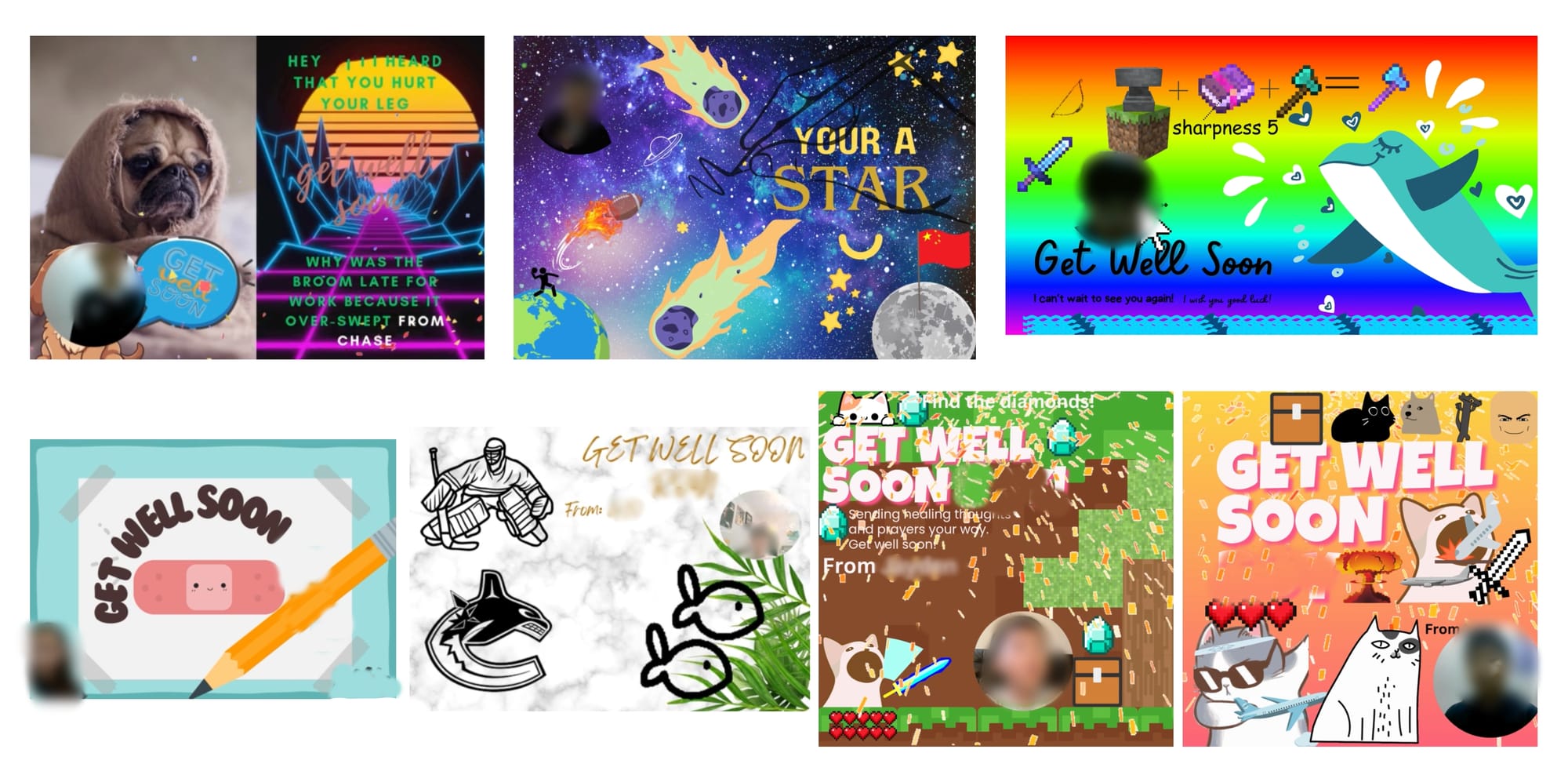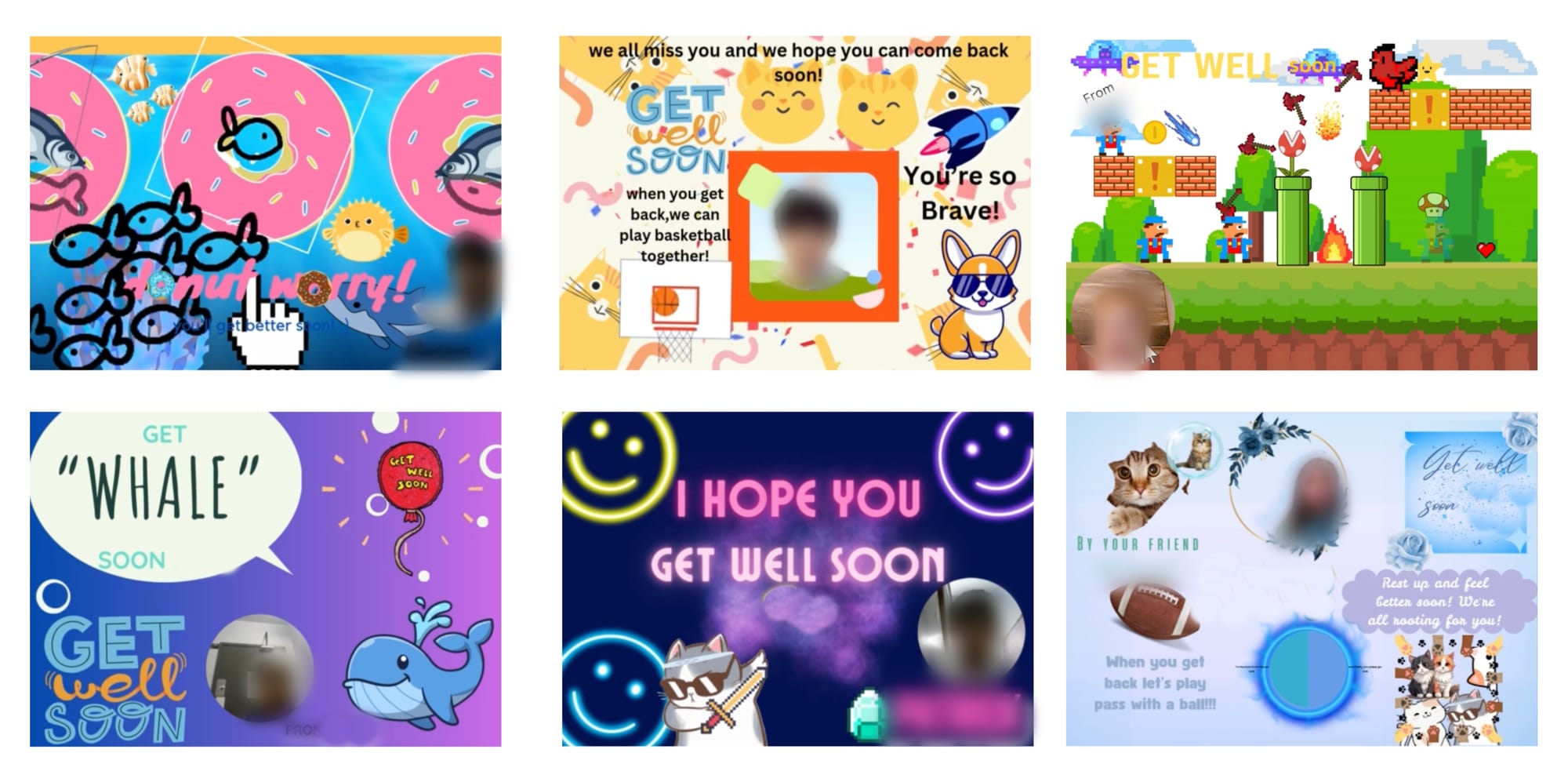Some of the best projects aren’t planned in advance—they just happen because someone cares.
Just before lunch, Nadia caught me in the staff room and asked if I had time to pop into her class. One of her students, who we’ll call Ethan, had recently broken his leg. He’d been stuck at home for weeks already (during Spring Break!!), with more recovery time ahead. Nadia wanted to find a way for the class to send him a little encouragement—and maybe a reminder that he hadn’t been forgotten.
Luckily, my afternoon was free—and within minutes, we had an idea. We decided to have the students create digital get-well cards using Canva. Here’s why I think it was a great fit:
- Students could easily record short video messages for Ethan—making their cards feel more personal and alive.
- The class is full of Canva-savvy kids, each one with their own unique style
- Cards could be sent to Nadia via Google Classroom individually who could then share them digitally with Ethan’s parents.
Simple, creative and heartfelt!

After lunch, I headed to the Grade 5 classroom to set the tone for the project. I started by sharing a story of my own—the time I broke my foot and spent weeks (so many weeks 😩) stuck in bed. There were gasps! And a few "no ways!" from the back of the room. 😲
I talked about the things you don’t expect to miss: the feeling of running, the noise of friends around you, the simple freedom of moving without thinking. Even a couple of weeks starts to feel like forever. And for a kid like Ethan—new to the school, still finding his place—it’s even harder. The students immediately connected with his situation.
More Than a Get-Well Card 💌
What made this project even more meaningful is that Ethan is an international student, and this is his first year at the school. Most of the students in the class have been together since Kindergarten. Ethan is still learning their inside jokes, their favorite games, the rhythm of their friendships.
This wasn’t just about wishing him a speedy recovery. It became about inviting him in. The conversations floating through the room said everything:
“What does Ethan like again? Anyone know?”
“Oh, does he like fishing? Yeah, he does!”
“I’m going to tell him we can’t wait for him to come back so we can play football!”
“He likes video games and we’ve been wanting to play Minecraft and Mario Kart together.”

Nadia gave everyone a few minutes to draft what they wanted to say in their video recordings. She framed it in a way that clicked: “We want these to feel personal, not like those generic get well cards you buy at the store, right?” And the kids took that seriously. Instead of focusing on what they didn’t know about Ethan, the class turned their energy toward finding common ground. You could hear the kindness being built, one question at a time.
A Google Drive Full of Heart
By the end of the block, every student had created a personalized digital card—many with short, sweet video messages attached. We collected them all into a shared Google Drive folder, ready for Nadia to send to Ethan’s parents.
It’s easy to forget how much a simple project like this can mean—to the student receiving the messages and to the classmates creating them.
Projects like this remind us that community is built one small, kind gesture at a time.
The Greatest Greeting Card Ever Sent 🛸
(And it's still flying through space.)
In 1977, NASA launched the Voyager spacecraft—and with it, the most epic greeting card ever sent. The Voyager Golden Record is a gold-plated message to aliens, packed with “hello” in 55 languages, sounds of Earth (like wind and whales), and music from Bach to Chuck Berry. It’s still floating through deep space today, over 20 billion kilometers from Earth. 🌎

It’s just slightly out of date, so why not have your students design a message to space themselves? What would they want the universe to know? 🚀

